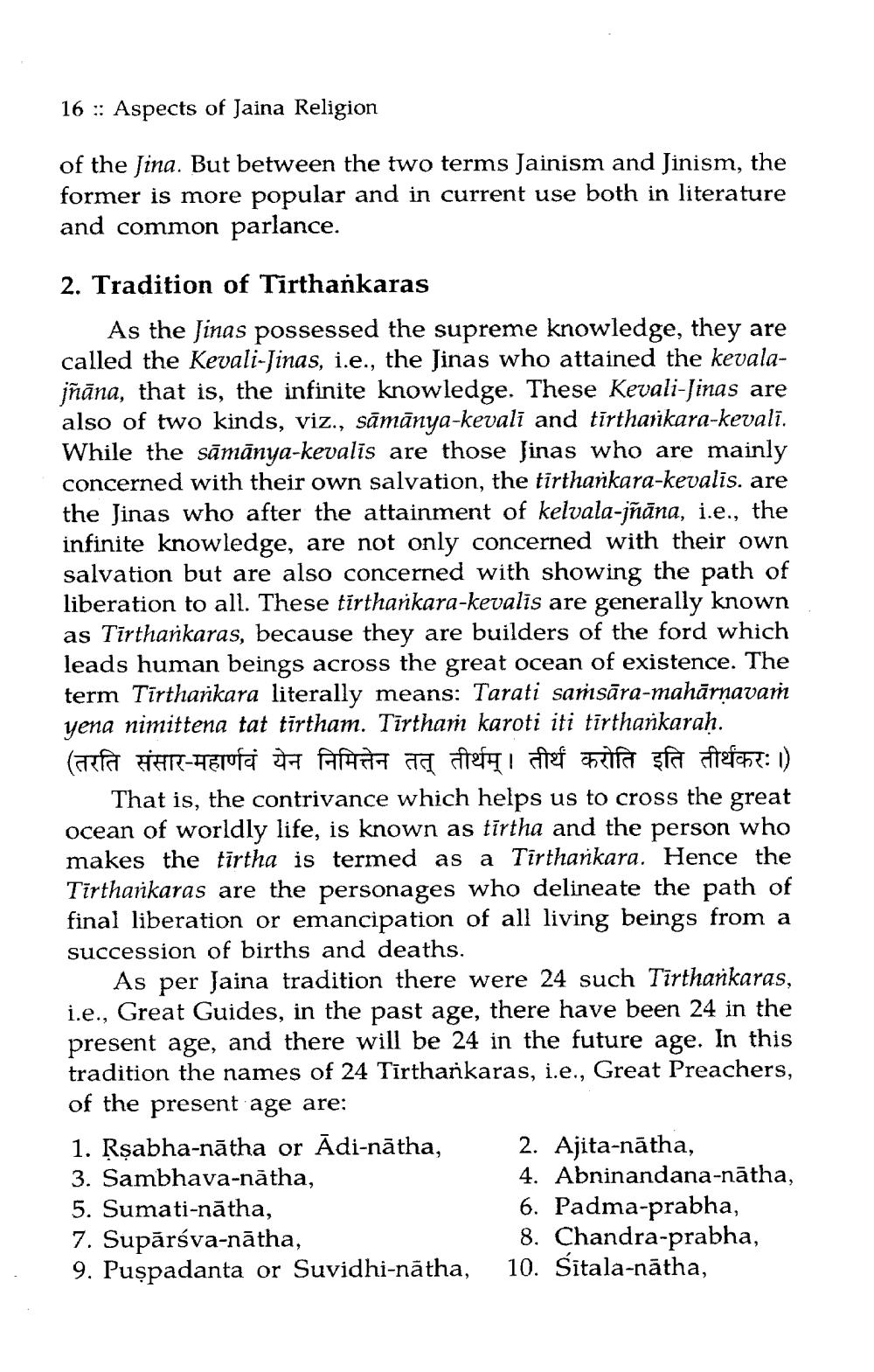________________
16 :: Aspects of Jaina Religion
of the Jina. But between the two terms Jainism and Jinism, the former is more popular and in current use both in literature and common parlance.
2. Tradition of Tīrthankaras
As the Jinas possessed the supreme knowledge, they are called the Kevali-Jinas, i.e., the Jinas who attained the kevalajñāna, that is, the infinite knowledge. These Kevali-Jinas are also of two kinds, viz., sāmānya-kevali and tirtharikara-kevali. While the sāmānya-kevalis are those Jinas who are mainly concerned with their own salvation, the tirtharkara-kevalis. are the Jinas who after the attainment of kelvala-jñāna, i.e., the infinite knowledge, are not only concerned with their own salvation but are also concerned with showing the path of liberation to all. These tirtharkara-kevalis are generally known as Tīrtharkaras, because they are builders of the ford which leads human beings across the great ocean of existence. The term Tīrtharkara literally means: Tarati saṁsāra-mahārnavam yena nimittena tat tirtham. Tīrtham karoti iti tirtharkaraḥ. (तरति संसार-महार्णवं येन निमित्तेन तत् तीर्थम्। तीर्थं करोति इति तीर्थंकरः।)
That is, the contrivance which helps us to cross the great ocean of worldly life, is known as tirtha and the person who makes the tirtha is termed as a Tirtharkara. Hence the Tirtharkaras are the personages who delineate the path of final liberation or emancipation of all living beings from a succession of births and deaths.
As per Jaina tradition there were 24 such Tirthankaras, i.e., Great Guides, in the past age, there have been 24 in the present age, and there will be 24 in the future age. In this tradition the names of 24 Tīrtharkaras, i.e., Great Preachers, of the present age are: 1. Rşabha-nātha or Ādi-nātha, 2. Ajita-nātha, 3. Sambhava-nātha,
4. Abninandana-nātha, 5. Sumati-nātha,
6. Padma-prabha, 7. Supărśva-nātha,
8. Chandra-prabha, 9. Puşpadanta or Suvidhi-nātha, 10. Sitala-nātha,




